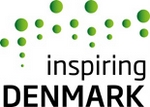GameAbilitation and ArtAbilitation
Scope
Society demographics indicate increased numbers of people with disability. Advances across technologies, methods and apparatus (as well as thinking) has resulted in a growing industry addressing future service needs of rehabilitation, therapy and associated disciplines. Trends point to the fact that a range of alternative strategies for intervention are supplementing traditional approaches due to advances in ICT, especially in respect of immersive and engaging interactive environments that stimulate and motivate participation in sessions. Play and creative expression are at the centre of such strategies.
GameAbilitation and ArtAbilitation have the common goal of informing, demonstrating and reporting latest concepts, apparatus and methods involved in these alternative strategies for intervention. ICT can enable increased accessibility and this is a core strategy of intervention focusing on games and art-related applications across healthcare situations. Learning in this context is wide and incorporates training and related progression and development.
Advances in perceptual controllers continue to enable increased opportunities for access by those whose functionality is impaired, such that no additional strength, dexterity or cognitive ability is required in order to interact with multimedia content that responds to input. This includes gesture, wand, and other alternative human-machine interfaces to the traditional mouse, keyboard and joystick. However, challenges are evident in respect of optimal input device and adaptive flexibility to address individual needs, mapping strategies, and interesting interactive content with the flexibility to stimulate idiosyncratically. Additional challenges are evident in the traditional assessment and evaluation side of things and it is evident from the field that new batteries of tests utilizing advances in digital methods are needed and may be around the corner and indeed presented at the GameAbilitation and ArtAbilitation symposiums. Such advances, as outlined above, target current and next-generation practitioners and researchers. The GameAbilitation and ArtAbilitation goal is to bring these groups together to meet and discus such strategies whilst sharing their knowledge of the field.
The GameAbilitation and ArtAbilitation symposiums target a large student audience so that next-generation practitioners are made aware of latest advances and results. In line with this special offers are being made for student registration as well as a call for volunteers. Reported work at the event targets all users, including the very young and the elderly, as well as people with various types of disabilities; also across/in all contexts of use.
Call for papers
Contributions in the form of long papers 6-8 pages, short papers 4-6 pages, or posters are asked for. Workshops and tutorials are also invited. Special sessions are invited where a specific topic will be addressed and at least three papers are accepted and author registered in which case special session leaders will receive a discounted registration. Submission indicates that at least one author will register (full) and attend the event to present each submitted work.
Post-conference publications
A selection of the best papers from the on ArtAbilitation and GameAbilitation international symposiums will appear in the UAIS journal (Springer).
Authors with accepted special contributions will be asked to submit an extended version of their paper. A typical length for a long paper is between 20 and 30 pages. Please also note that 20-30 pages unformatted ordinary MS Word text would typically result in a shorter document of 12-20 pages, formatted according to the Springer guidelines.
A previous edition of ArtAbilitation resulted in a journal special issue - see Digital Creativity, 18:2, 65-68 https://dx.doi.org/10.1080/14626260701400967
Paper submission
Submit your paper here.






































